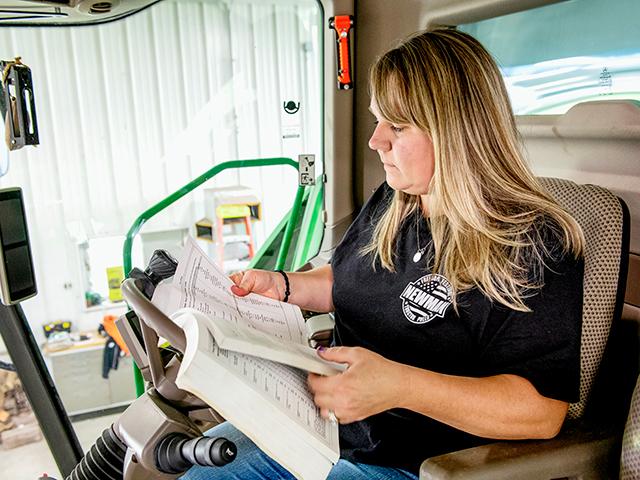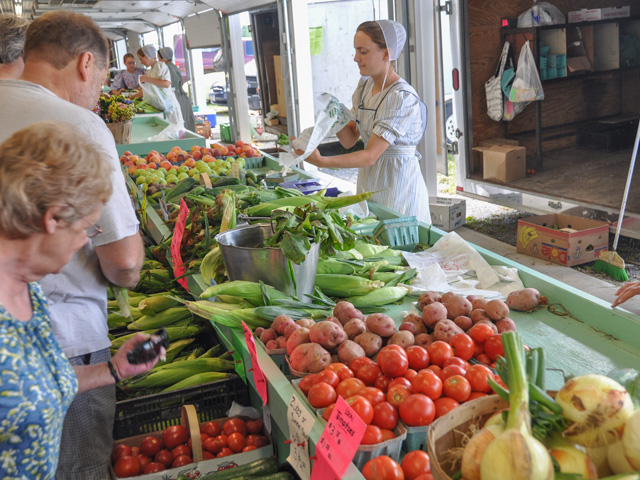Looking to Expand CFAP Aid
As Dollars Flow Out, Lawmakers and Others Want Broader Access for Farm and Food Aid
GLENWOOD, Iowa (DTN) -- Lawmakers and others continue calling on USDA to broaden both its programs for farmers and food aid meant to respond to COVID-19.
Out of a total of $16 billion set aside for the Coronavirus Food Assistance Program (CFAP), USDA so far has paid $5.87 billion directly to farmers and livestock producers. USDA also has spent another $2.67 billion to get food-aid boxes to food banks around the country. Lawmakers and others are raising questions about how USDA determines who gets that aid and are asking USDA to make changes to both programs.
Reps. Chellie Pingree, D-Maine, and Jeff Fortenberry, R-Neb., wrote a bipartisan letter Monday to Agriculture Secretary Sonny Perdue, asking USDA to open up CFAP aid to include more small, diversified farms that may sell direct to consumers or through other local markets.
The Coronavirus Aid, Relief and Economic Security (CARES) Act had $9.5 billion for farmers and livestock producers. Congress included language so USDA would include smaller farmers who sell locally to farmers markets, restaurants or institutions such as schools.
Pingree and Fortenberry stated, "Despite this, USDA did not provide any specific accommodation for these producers in the design of CFAP payments.
Indeed, the program's rules have meant many of these farms are struggling to access relief or are entirely ineligible for assistance through this program."
USDA updates some details on CFAP payments every Monday afternoon. As of July 13, USDA reported $5.87 billion in payments have been sent out, and 409,423 farmers and livestock producers have had their applications approved. USDA's breakdown shows cattle, milk, corn, hogs, soybeans and cotton combine for about 96% of the total payments. Another 59 crops and livestock listed as eligible for payments account for about $234.6 million in payments, or 4% of the total.
To help bolster the lawmakers' case for small farmers, the National Sustainable Agriculture Coalition sent out survey results in late June from the Carolina Farm Stewardship Association. The Carolina group highlighted income losses from small (under $25,000 in annual income) to mid-sized farmers (up to $250,000 in annual income) from 133 farmers who responded to the survey. More than 75% of respondents reported sales losses due to COVID-19 restrictions. More than one-third of the farms surveyed reported more than $1,000 in lost sales weekly, the report stated.
P[L1] D[0x0] M[300x250] OOP[F] ADUNIT[] T[]
Last Thursday, USDA expanded the list of commodities that would be eligible for CFAP, adding more than 40 different fruits, vegetables and spices. USDA also increased payment rates for more than a dozen other fruits and vegetables.
Pingree and Fortenberry want USDA to provide payments to farmers selling locally by considering total revenue loss rather than price losses for individual commodities. They also want more flexibility in documentation for losses and they call on USDA to extend the eligibility of more commodities as well.
HEMP LEFT OUT
The U.S. Hemp Roundtable expressed its disappointment that hemp remains excluded from eligible commodities. The group stated "the battle is not over" because USDA did state it expects to add more commodities for CFAP in the coming weeks.
The U.S. Hemp Roundtable stated its leaders would be meeting with lawmakers to get members of Congress to push USDA into approving hemp for the aid program. Executives from other businesses related to hemp production also are voicing concerns that hemp has been left out. Hemp was legalized in the 2018 farm bill.
FOOD BOX QUESTIONS
More than a dozen members of New York's congressional delegation also signed on to a "stern" letter to Perdue over what the lawmakers state is USDA's "mishandling" of the Food Box Program.
The congressmen stated that, despite congressional outreach, USDA is not providing New York and New England states with the same fairness for Food Box contracts. Despite having 10% of the national population, the Northeastern states received 4% of funds in the first round of contracts, and even less in the second round.
USDA approved $1.2 billion in May for vendors to deliver commodities to regional food banks. Through Monday, USDA reports those funds have led to 35 million food boxes invoiced around the country. Agriculture Secretary Sonny Perdue now frequently travels to food banks around the country. A second round of contracts for $1.47 billion for vendors began July 1. That project has led to 2.5 million food boxes invoiced so far.
The news release from the New York members of Congress also included quotes from regional food bank directors who pointed out of some of the challenges getting the USDA food boxes.
"The COVID-19 pandemic has created near-Great-Depression levels of unemployment in the United States," said Dan Egan, executive director at Feeding New York State. "New York's 10 food banks have had to double our food distribution as the need for charitable food skyrocketed. At the same time, our farmers lost many of their markets and had surplus food available. New Yorkers have stepped up at the farm, at the food bank and in every community to support each other in this crisis. It's not clear to us why USDA was not able to do the same.
"Because we are far from the end of this crisis, the COVID-19 Farm Assistance Program must be scrutinized and improved so that it can become the major contributor it ought to be, ensuring all Americans get enough to eat and all farms are supported."
In their letter, the lawmakers outlined more than a dozen questions they want USDA to answer by the end of this week.
DTN emailed a list of questions to USDA's press office on Monday but did not receive a response before deadline.
USDA CFAP information: www.farmers.gov/cfap
Carolina Farm Stewardship Association report: https://www.carolinafarmstewards.org/…
Chris Clayton can be reached at Chris.Clayton@dtn.com
Follow him on Twitter @ChrisClaytonDTN
(c) Copyright 2020 DTN, LLC. All rights reserved.




